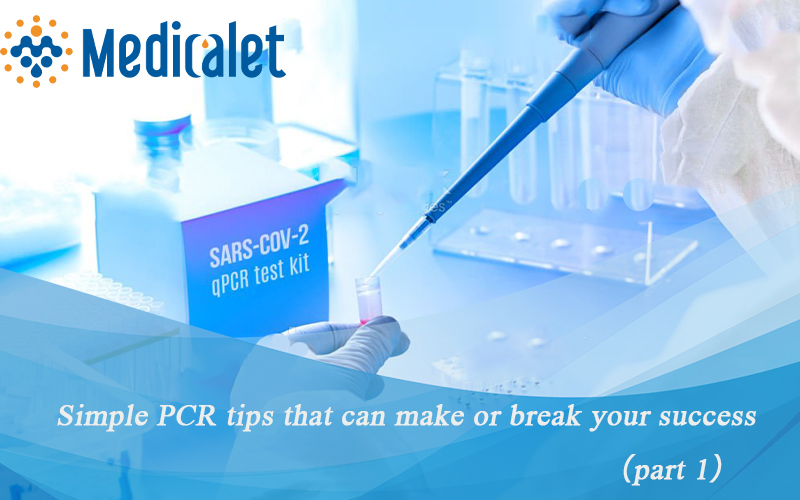
Since the outbreak of the COVID-19 pandemic, PCR is on everybody's lips. However, only people working in the lab know how difficult it can be to get the desired results using this well-established technique. Out of this frustration came the popular joke that PCR should stand for ’pipette, cry, repeat’. To ensure that this stays a joke from now on, and that your PCR reactions never drive you to despair again, we have compiled the most important tips and tricks for a successful PCR set-up.
What is PCR?
The polymerase chain reaction (PCR) is used to amplify specific DNA sequences for downstream use. Its inventor Kary Mullis, whose patent on PCR was approved in 1987, was awarded the Nobel Prize in Chemistry six years later,1 and since this time, PCR has remained one of the most essential molecular biology techniques. Genetic engineering, genotyping, sequencing and the identification of familial relationships, to name a few examples, wouldn't be possible without it.
To perform PCR reactions, you need to prepare a master mix, add template DNA, and amplify the sequence of interest using a thermal cycler.
PCR tips and tricks
Setting up a PCR reaction might seem straightforward, but it is far from it. Calculating the required amounts of master mix reagents correctly to get the right volume, at the right concentration, is the first challenge.
Once this is accomplished, the reagents need to be mixed together. The difficulty here is that the liquids usually have to be cooled and they are often highly viscous, sticky and needed in minimal quantities. In addition, work must be performed in a concentrated manner, as distractions or interruptions can quickly lead to a situation where you no longer know which reagents have already been added to the master mix. Errors such as skipping a tube or well can also easily occur when filling PCR strips or plates with master mix and adding template DNA, especially when using single channel pipettes.
The last and probably biggest challenge is to keep your PCR reactions free from contamination. PCR is a very sensitive assay that can create a large number of nucleic acid copies from a tiny amount of starting material, so amplicon and sample contamination can be a huge problem.
Best PCR pipetting practices
Start by preparing your master mix from all the components listed above, except the template DNA. The huge advantage of preparing the entire quantity of master mix needed for an experiment, and subsequently transferring single aliquots into PCR strips or plates, is that you can pipette higher volumes with better accuracy. On top of that, it reduces pipetting steps, making the entire process less tiring and error prone. Since pipetting mistakes cannot be completely ruled out, you should add the master mix components in order of their price, starting with the most affordable reagent. This way, you waste less money if you have to start over.
Once your master mix is finished, well mixed and dispensed into tubes or plates, you can add the template DNA. As the DNA samples are usually highly viscous and needed in small quantities, you should either dispense them into the master mix or onto the wall of the tube or well. After dispensing, keep the plunger depressed while dragging the tip gently along the wall of your labware to remove any residual liquid. In addition, we recommend using low retention tips.
If you're not using a hot-start polymerase, cool your reagents throughout the entire process of master mix preparation and sample addition, to prevent non-specific amplification.
When you are ready to load your samples into the thermal cycler, check that they are tightly capped or sealed, and spin them down to ensure that no droplets remain on the labware wall during amplification.
Medicalet can provide you with the best PCR consumables.
Ensure accurate, precise pipetting.
Manufactured using high quality raw materials and the latest molding techniques.
Designed using our knowledge of liquid handling. Our modern automated
production facilities, and our expertise, enable us to produce uniformly smooth,
hydrophobic surfaces on the inside and outside of our tips, to prevent liquid
retention.
Learn more: https://www.medicalets.com/liquidhandling.html
https://www.medicalets.com/pcr.html
